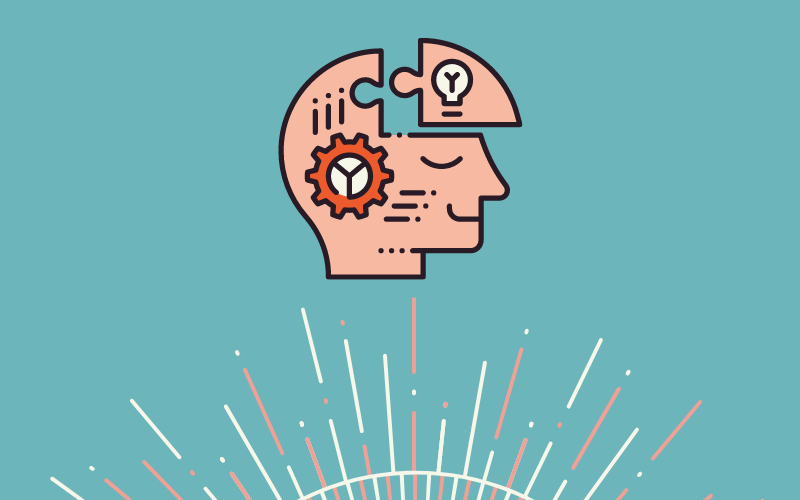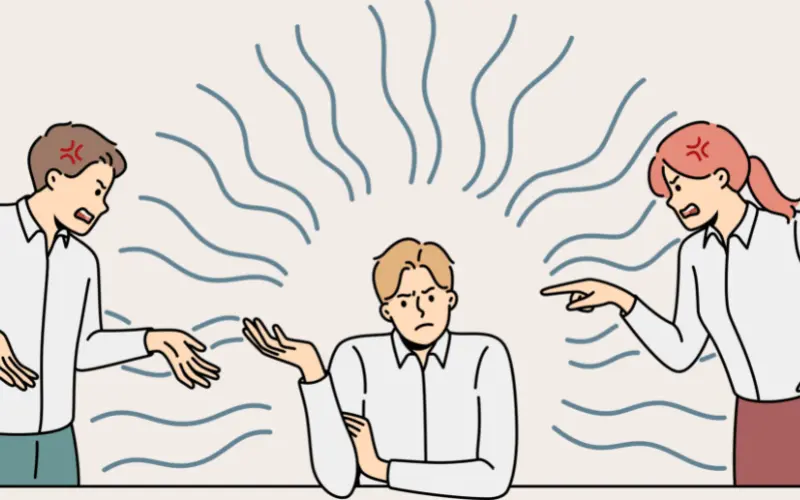Attention Deficit Hyperactivity Disorder (ADHD) is a medical condition that impairs your ability to pay attention, sit still, and regulate your behaviour.
ADHD disorder is a common condition that affects around 3% of school-aged children. Males are 6-8 times more likely than females to be afflicted. This begins before the age of seven, and the vast majority of individuals begin to show symptoms by the age 4.
The ADHD is a particular and frequent behaviour problem in children that is characterised by hyperactivity, short attention span, and poor concentration abilities, impulsiveness, irritability, explosiveness, variability, and poor school work.
Symptoms of ADHD
ADHD are almost always present at the start of a child’s life (usually in the first 5 years of life). Their main features include a lack of perseverance in cognitively demanding activities, as well as a tendency to jump from one activity to the next without finishing any of them, disorganized, and excessive activity. These issues generally remain throughout school and even into adulthood, but many people who are impacted exhibit modest improvements in activity and concentration.
ADHD for distractibility and a short attention span
- Fails to complete the tasks that have been started.
- Switches from one unfinished task to another.
- Doesn’t appear to be paying attention.
- External stimuli are easily distracting.
- Is prone to misplacing items.
ADHD with hyperactivity
- When in his or her seat, he or she fidgets with his or her hands or squirms excessively.
- Has trouble staying in his or her seat, even when it is anticipated.
- Moves around a lot.
- Talks excessively.
- Interfering with the actions of others.
ADHD with impulsivity
- Acts on the impulse of the moment, before considering.
- Waiting for a turn at work or play is difficult, with the exception of hyperactivity.
There are a number of additional anomalies that may be linked to these conditions.
ADHD youngsters are typically rash and impulsive, prone to mishaps, and end themselves in disciplinary problems as a result of thoughtless (rather than stubborn) rule violations. Their relationship with adults are socially disconnected, with a lack of usual caution and restraint.
Dissocial behaviour and poor self-esteem are examples of secondary consequences. As a result, ADHD and other disruptive behaviour patterns, such as “unsocialized conduct disorder,” have a lot in common. Reading difficulties (as well as other academic issues) are widespread.
Boys suffer from hyperkinetic disorders at a far higher rate than girls.
Causes of ADHD
Numerous factors have been implicated, including minor brain injury, maturational lag, heredity, neurotransmitters (norepinephrine and dopamine), and early developmental psychodynamic factors. Although a focus on both aspects is crucial in the care of a biological individual patient, the reason is not yet understood. It is more likely to be a factor than a purely psychosocial one.
Course of ADHD
The vast majority of patients (about 80%) recover on their own by the time they reach puberty, however a small percentage (15-20%) may continue to experience symptoms into adulthood. After puberty, the most prevalent remaining characteristics are impulsivity and inattention, whereas hyperactivity typically fades.
Adult ADHD is recognised by both ICD-10 and DSM-IV-TR, and it can occur at any age. Graduates with childhood onset ADHD who continue to have symptoms in adulthood, as well as those who develop symptoms for the first time in adults, fall into this category.
How ADHD is diagnosed for kids
- The teacher’s school report (often the most reliable).
- Report from the parents
- Clinical assessment (many children with hyperactivity may be able to sit still in the new setting of the hospital and thus the diagnosis may be missed).
In mental retardation, hyperactivity is a frequent clinical sign. As a result, mental impairment should always be ruled out before proceeding.
Diagnostic Guidelines
- Impaired attention and overactivity are the cardinal characteristics; both are required for the diagnosis and should be present in many situations (e.g. home, classroom, clinic).
- The children go from one activity to another often, appearing to lose interest in one work because their attention is drawn to another (although laboratory studies do not generally show an unusual degree of sensory or perceptual distractibility). Only if the child’s perseverance and low attention are extreme for his or her age and IQ can they be identified.
- Excessive restlessness is a sign of overactivity, especially in settings where relative quiet is required. It might include the youngster running and leaping around, getting up from a seat when he or she was intended to stay seated, excessive talkativeness and noise, or squirming and wiggling, depending on the scenario.
- This personality trait is particularly noticeable in structured, organised circumstances that necessitate a high level of behavioural self-control.
- Children with this disorder display disinhibition in social relationships, recklessness in potentially dangerous situations, and impulsive flouting of social rules (as evidenced by intruding on or interrupting others’ activities, prematurely answering questions before they are completed, or difficulty waiting turns).
Adults can also be diagnosed with ADHD conditions.
The reasons are the same, but attention and activity must be assessed using developmentally appropriate benchmarks. When hyperkinesis was present in childhood but has since vanished and been replaced by another condition, such as dissocial personality disorder or substance misuse, the current condition takes precedence over the previous one.
Differential Diagnosis
- Mixed disorders are frequent, and when they are present, pervasive developmental abnormalities take priority. The most difficult aspect of diagnosis is distinguishing ADHD from conduct disorder: when its criteria are satisfied, ADHD is diagnosed first, followed by conduct disorder. Conduct disorder, on the other hand, is associated with milder forms of hyperactivity and inattention. When both hyperactivity and conduct disorder are present, and the hyperactivity is extensive and severe, the diagnosis should be “ADHD conduct disorder.”
- Another issue arises from the fact that hyperactivity and ADHD might be a sign of anxiety or depressive illnesses. As a result, the restlessness that is common in agitated depressive disorder should not lead to a ADHD diagnosis.
- Similarly, the restlessness that is commonly associated with extreme anxiety should not be mistaken for a ADHD Disorder. If one of the anxiety disorders meets the criteria, it should take precedence over ADHD disorder unless there is evidence of the existence of a ADHD condition in addition to the restlessness associated with anxiety.
- In the same way, if the criteria for a mood disorder are satisfied, ADHD should not be diagnosed just because concentration is hindered and psychomotor agitation is present. Only when symptoms that are not merely part of the mood disturbance clearly suggest the existence of a ADHD can a double diagnosis be established.
- Acute start of hyperactivity in a school-aged kid is more likely related to a reactive condition (psychogenic or organic), a manic state, schizophrenia, or a neurological illness (e.g. rheumatic fever).
Treatment for ADHD
The following are some of the ways for dealing with ADHD:
Pharmacotherapy
Stimulant medication
- Dextro-amphetamine or dexamphetamine (2.5-20 mg/day) and methylphenidate (5-60 mg/day) have traditionally been used as stimulants. Methylphenidate is the medication of choice for treating ADD at the moment, with a high response rate. Sustained release versions of methylphenidate are preferred due to greater treatment concordance and the simplicity of once-daily dosing.
- Both dexamphetamine and methylphenidate stimulate the inhibitory effects on the cerebral cortex, reducing hyperactivity and/or distractibility.
- Other medications can be used when stimulant medication is unavailable or ineffective, after careful assessment of the risks and benefits in the specific patient. Clonidine, tricyclic antidepressants (such as imipramine), bupropion, venlafaxine, chlorpromazine, thioridazine, and lithium carbonate are some of these medications.
- For children who do not react to stimulants, atomoxetine, a norepinephrine reuptake inhibitor, may be an option. The typical daily dosage range is 0.5-1.2 mg/kg. In adults with ADD, atomoxetine appears to be the medication of choice.
- Barbiturates are not recommended for people with ADD since they enhance hyperactivity.
Behaviour Modification
- Supportive Psychotherapy and Counseling.
- Behaviour modification and counselling, in addition to medication therapy, are highly crucial in the successful management of ADHD.
If you suspect you or your kid has ADHD, the first step should be to consult a psychologist. They can assist you or your child to figure out whether ADHD is a factor. They can help you in developing a treatment plan that will allow you to better control your symptoms and live with ADHD.











